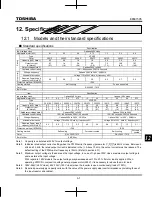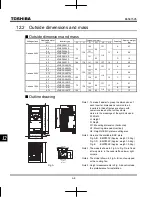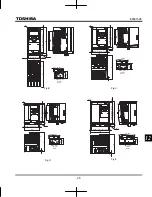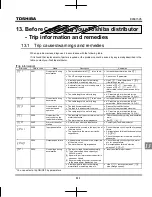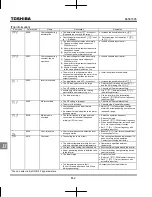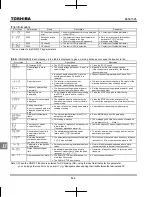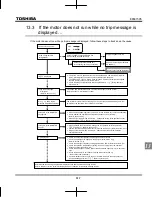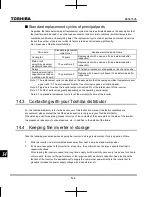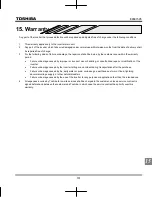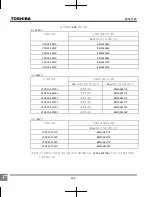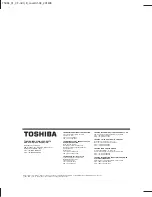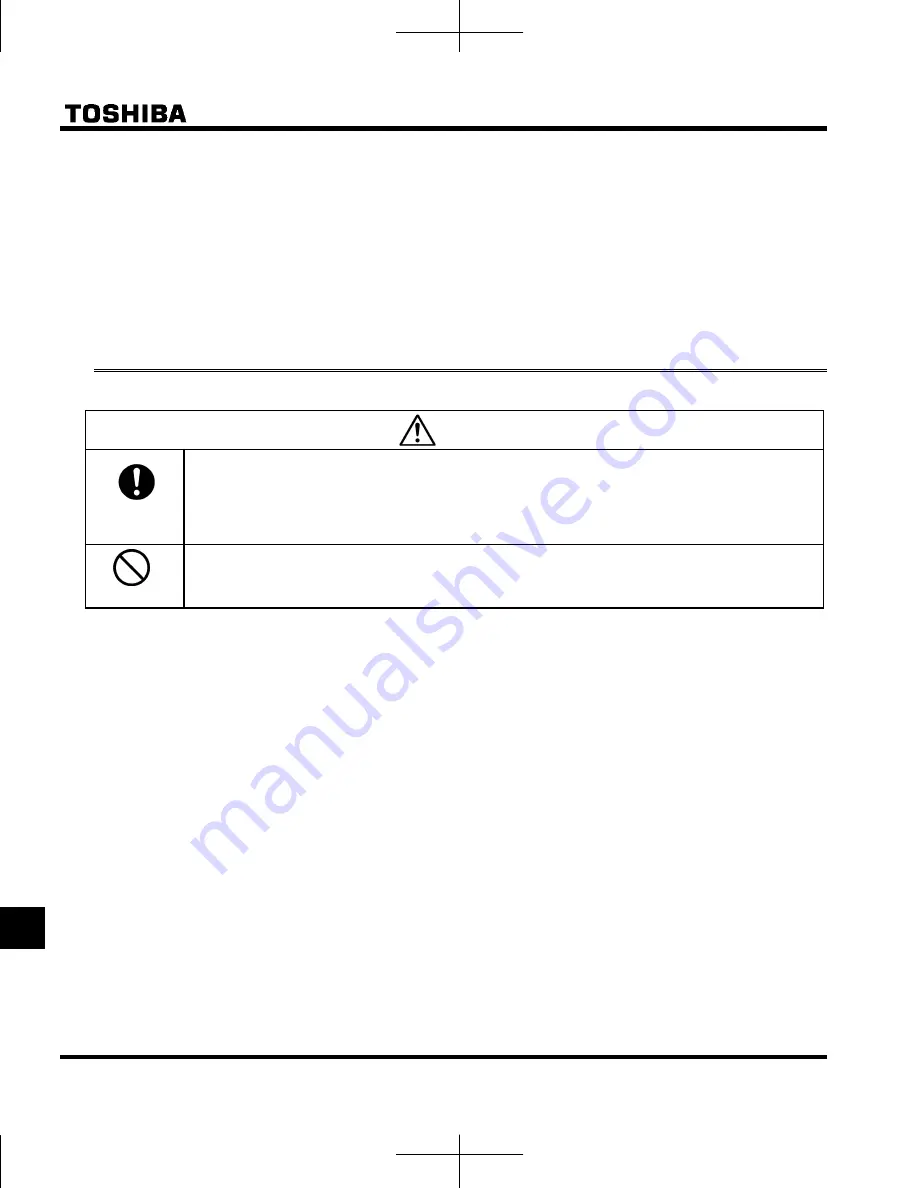
E6581595
N-2
14
Check points
1. Something unusual in the installation environment
2. Something unusual in the cooling system
3. Unusual vibration or noise
4. Overheating or discoloration
5. Unusual odor
6. Unusual motor vibration, noise or overheating
7. Adhesion or accumulation of foreign substances (conductive substances)
14.2 Periodical
inspection
Make a periodical inspection at intervals of 3 or 6 months depending on the operating conditions.
Warning
Mandatory
action
Before inspection, perform the following steps.
(1) Shut off all input power to the inverter.
(2) Wait at least 15 minutes and check to make sure that the charge lamp is no longer lit.
(3) Use a tester that can measure DC voltages (400V DC or more), and check that the voltage to the
DC main circuits (across PA-PC) does not exceed 45V.
Performing an inspection without carrying out these steps first could lead to electric shock.
Prohibited
Never replace any part.
This could be a cause of electric shock, fire and bodily injury. To replace parts, Contact your Toshiba
distributor.
Check items
1. Check to see if all screwed terminals are tightened firmly. If any screw is found loose, tighten it again
with a screwdriver.
2. Check to see if all caulked terminals are fixed properly. Check them visually to see that there is no trace
of overheating around any of them.
3. Check all cables and wires for damage. Check them visually.
4. Remove dirt and dust. With a vacuum cleaner, remove dirt and dust. When cleaning, clean the vents
and the printed circuit boards. Always keep them clean to prevent an accident due to dirt or dust.
5. If no power is supplied to the inverter for a long time, the performance of its large-capacity electrolytic
capacitor declines.
When leaving the inverter unused for a long time, supply it with electricity once every two years, for 5
hours or more each, to recover the performance of the large-capacity electrolytic capacitor. And also
check the function of the inverter. It is advisable not to supply the commercial power directly to the
inverter but to gradually increase the power supply voltage with a transformer, etc.
6. If the need arises, conduct an insulation test on the main circuit terminal board only, using a 500V
insulation tester. Never conduct an insulation test on control terminals other than terminals on the
printed circuit board or on control terminals. When testing the motor for insulation performance, separate
it from the inverter in advance by disconnecting the cables from the inverter output terminals U, V and W.
When conducting an insulation test on peripheral circuits other than the motor circuit, disconnect all
cables from the inverter so that no voltage is applied to the inverter during the test.

